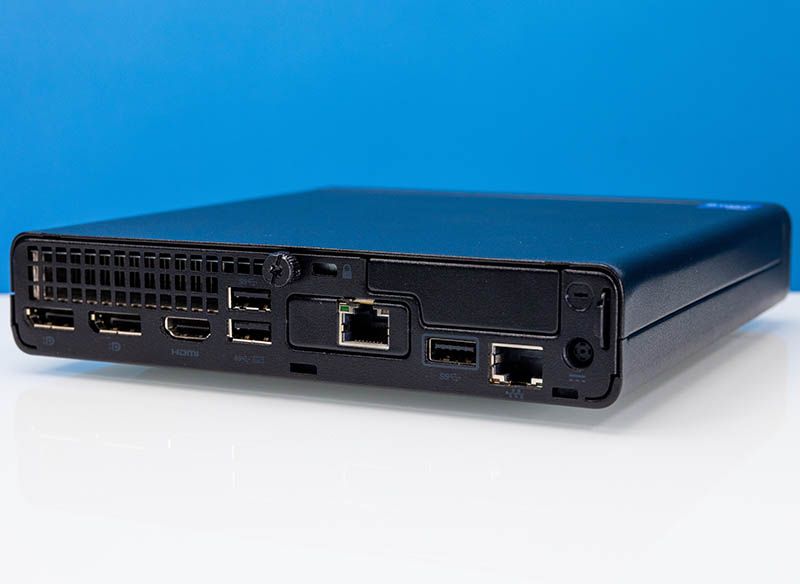Perfect Project TinyMiniMicro Pushing a 1L PC as a Server Concept
We have done many Project TinyMiniMicro reviews over the past few years, but something we have not done recently is to show what can be done with a 1L PC. Perhaps better said, maybe it is just how much can be done with a 1L PC. Today, we are going to take a 1L HP Elite Mini 600 G9 and turn it into three levels of server based on Proxmox VE. We are going to look at three tiers spanning from a mundane eBay configuration to a configuration with 96GB of memory, 8TB (2x 4TB) of fast PCIe Gen4 NVMe storage, and even 10Gbase-T networking in our Tier 2 upgrade machine.
Perfect Project TinyMiniMicro: The Video
We have a video on this as one may have imagined by now. You can find it here:
If you wanted to undertake any of these upgrades, we show how easy it is to install them and more. We also go into the Proxmox VE 8 setup on this node.
Perfect Project TinyMiniMicro: Base Level
The HP Elite Mini 600 G9 we purchased via eBay and it had a fairly simple configuration with an Intel Core i7 CPU, a low-power SSD, and a 16GB DIMM. For many, “perfection” is synonymous with “whatever I can get cheap” and this is perhaps the best example of that.
We got our base networking and a dual USB 3 Flex IO expansion module in the rear.
The CPU we spent extra care to select. This unit has an Intel Core i7-12700T with 8 P-cores and 4 E-cores for 12 cores and 20 threads total. Generally, the Core i7 units are much less expensive than the Core i9 units second-hand because of the volumes they are sold in. If we were going to build a VMware lab, we would generally opt for the Core i5 with all P-cores since VMware does not, and is not planning to support heterogeneous cores in the near term and the workaround is a bit of a pain.
On the SSD side, the unit came with a DRAM-less 512GB NVMe SSD. The SSD was not particularly fast and it is also only 512GB so there is an easy upgrade path, especially with a second slot available.
We also have the onboard WiFi 6E via the Intel AX211 and 1GbE via the Intel i219-LM.
Tier 1 was really about using this as-is. Still, our unit came with a single 16GB DDR5-4800 SODIMM. Other units will come with 2x 8GB for 16GB. With a single SODIMM, we would usually get a matching 16GB SODIMM and go to 32GB making this a very respectable lab node as-is.
If you want to learn more about what we are using as a base here, you can see our HP Elite Mini 600 G9 Review.
We are going to retain the CPU, chassis, and WiFi module through all of our upgrade tiers. Next, we are going to do more of a budget-friendly upgrade to the unit in what we are calling a Tier 1 upgrade package.
Perfect Project TinyMiniMicro: Tier 1 Upgrades
The Tier 1 upgrade package is going to have a few main components. We are going to upgrade the storage, memory, and networking in what is a relatively low-cost upgrade path.
On the SSD side, there are a number of options. The idea is to use the second M.2 SSD slot to simply add storage. We re-use the 512GB drive for boot and then add a second capacity drive for storage.
We are using the Rocket 4 Plus generation of SSDs here. There are options ranging from high-end 4TB and 8TB NVMe SSDs down to lower-end 1TB and 2TB SSDs. These are also faster drives if you saw Will’s Sabrent Rocket 4 Plus 2TB Review that are a big upgrade from the 512GB stock SSD.
On the networking side, we are using the HP EliteDesk Mini 2.5GbE Flex IO V2 NIC that we featured about a year ago.
This NIC is based on the Intel i225-V B3 so it is a 2.5GbE NIC. Adding the second NIC allows us to use this for storage or for other types of traffic while still having access to the 1GbE and WiFi NICs for management and other tasks.
A machine with 12 cores, 64GB of RAM, 2-4TB of dedicated storage, and a second wired NIC at 2.5GbE speeds is substantial, but what about if someone wants more? Next, we are going to go all-out and get the maximum performance we can out of this little machine in a Tier 2 upgrade package.
Source: ServeTheHome


